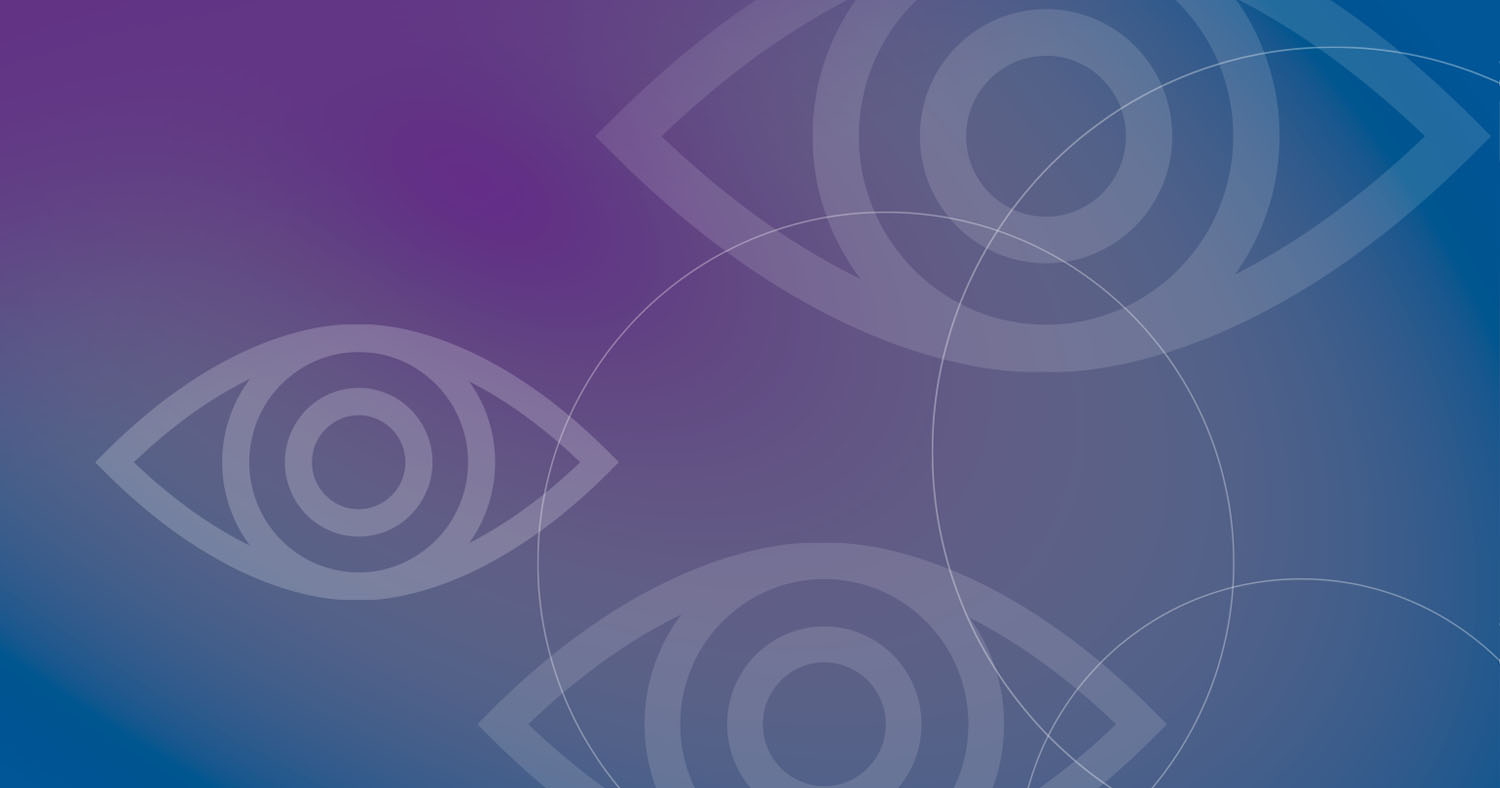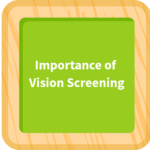Amelia did not pass a vision screening at her Head Start program.
Amelia’s momma received a referral from the vision screening to take Amelia for an eye examination to see if Amelia had a vision disorder and needed treatment, such as prescription eyeglasses.
Amelia’s momma immediately made an appointment with an eye doctor, took Amelia to the eye examination, and followed the eye doctor’s treatment advice for eyeglasses.
When Amelia returned to her classroom, wearing her new glasses, she walked into the room. She looked all around the room. She spotted a picture of giraffes on the wall.
Amelia walked over to the picture, turned around, found her teacher, and said . . . “I didn’t know giraffes had eyes!”
Amelia, her momma, and her Head Start teacher did not know Amelia had a vision disorder and blurred vision.
We can’t see that children can’t see.
This means parents, caregivers, guardians, teachers, and even children usually do not know blurred vision is keeping the child from knowing the difference between the eyes of a giraffe and spots on the giraffe.
We do know that up to 1 in 17 preschool-aged children, 1 in 5 Head Start children, and an estimated 1 in 4 school-aged children have vision disorders, such as blurred vision. Vision screening can help find these children who would benefit from an eye examination from an eye doctor.
Comment from a mother:
“If I hadn’t brought my son, I don’t know how long we would have gone . . . he wasn’t aware . . . the teacher wasn’t aware, and I know when he got his glasses he was like, ‘Wow’. . . . And he kept saying to his sister, ‘You can just see like this without them?’ He was just in amazement.” *
Vision screening in your community will help find children whose poor vision can affect their development, learning, and even classroom behaviors.
Having a vision screening, followed by an eye examination when your child fails vision screening, will help your child – clearly – see the eyes of a giraffe instead of blurred spots.
Comment from an eye care provider:
“Once parents see that [a vision problem in their child], they are often quite shocked and feel guilty about it, like they should have done something about it, so you have to reassure them that there is nothing they could have done.” **
Do Not Feel Guilty!
We often hear from parents that they feel guilty:
- After their children receive a referral from a vision screening for an eye examination,
- The eye doctor prescribes eyeglasses,
- Their children wear their new glasses, and
- For the first time they can see separate leaves on a tree or the eyes of a giraffe.
Many parents often feel guilty for not knowing their children could not see clearly.
Please do not feel guilty if you didn’t know your child couldn’t see clearly and needed glasses. Be proud of yourself for following up with eye care from an eye doctor after receiving a referral from a vison screening.
Comment from a father:
“I did not know that my daughter does not have good vision in one eye and that she needs glasses. Now only I know that her vision will be better with glasses. So I will ask her to wear spectacles.” ***
Summary
You likely will not know your child has blurred vision. Your child likely will not know if their vision is blurred. Your child’s teacher may not know your child has blurred vision. It is important for your child to have a vision screening to see if your child truly has blurred vision.
If you receive a referral for an eye examination from your child’s vision screening, follow-up with an eye doctor. Schedule an appointment for an eye examination, take your child to the eye examination, and follow the eye doctor’s treatment plan. And, do not feel guilty if you learn that your child has a vision problem.
To-Do List
If you receive a referral for an eye examination because your child did not pass a vision screening in your primary health care provider’s office, at Head Start, in a Parents as Teachers program, at a health fair in a mall, at school, or anywhere in the community where your child’s vision is screened, take your child for an eye examination and follow the eye doctor’s suggestions.
If your child’s eye doctor recommends prescription glasses, buy the prescription glasses, and make sure your child wears the eyeglasses.
If dollars are tight and your budget does not have extra money for follow-up care with an eye doctor, inancial resources are available to help you cover the cost of an eye exam and treatment. Visit this Prevent Blindness link: Vision Care Financial Assistance Information.
References:
**Cassetti, V., Tom, S., & Alison, B. (2019). Challenges of eye health care in children and strategies to improve treatment uptake: a qualitative study from the perspective of eye care professionals in the UK. British and Irish Orthoptic Journal, 15(1), 96-104. https://doi.org/10.22599/bioj.133
*Irving, E. L., Sivak, A. M., & Spafford, M. M. (2018). “I can see fine”: Patient knowledge of eye care. Ophthalmic & Physiological Optics, 38(4), 422–431. https://doi.org/10.1111/opo.12566
Jonas, D. E., Amick, H. R., Wallace, I. F., Feltner, C., Vander Schaaf, E. B., Brown, C. L., & Baker, C. (2017). Vision screening in children ages 6 months to 5 years: A systematic review for the U.S. Preventive Services Task Force. Agency for Healthcare Research and Quality (US). https://www.ncbi.nlm.nih.gov/books/NBK487841/pdf/Bookshelf_NBK487841.pdf
***Narayanan, A., Kumar, S., & Ramani, K. K. (2017). Spectacle compliance among adolescents: A qualitative study from Southern India. Optometry and Vision Science, 94(5), 582–587. https://doi.org/10.1097/OPX.0000000000001070
Varma, R., Tarczy-Hornoch, K., & Jiang, X. (2017). Visual impairment in preschool children in the United States: Demographic and geographic variations from 2015 to 2060. JAMA Ophthalmology, 135(6), 610-616.




